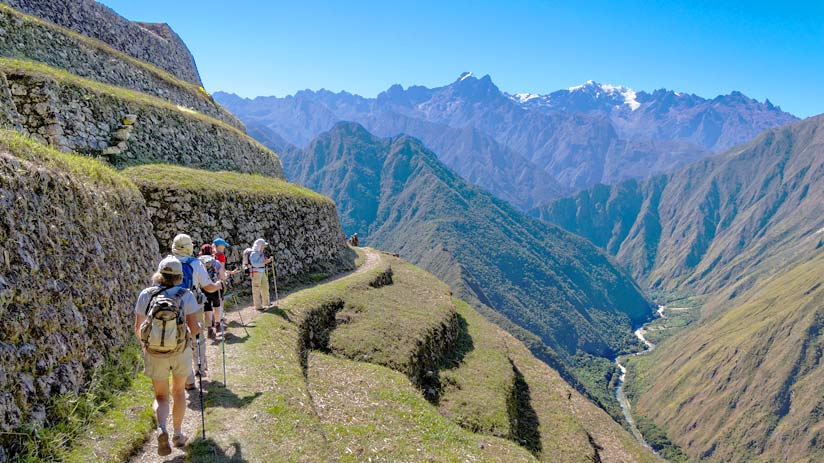The Weather in Peru
Peru’s diverse geography means that its seasons are slightly less than straightforward. The country falls in the southern hemisphere in the tropical and subtropical belts of South America, meaning most of the country has two seasons – wet and dry. Summer is wetter, winter is drier. The rainy season happens between December and February and this is the quietest time for travellers everywhere except on the coast, where sunny weather makes it the most popular time of year for beach activities.
The dry season is between June and August making this the most popular time for hiking the Inca Trail and visiting Machu Picchu – and it’s important to book these activities as far in advance as possible (Inca Trail permits in particular can sell out months in advance). It is also the driest time in the Amazon Jungle, making it better for wildlife viewing, although be aware it is hot and humid in the jungle year-round. The coast, by contrast, is generally cool and misty though usually there is no need for more than a sweater at most.
On either side of the dry season, the winter shoulder seasons (May, September-October) provide a compromise, with fewer travellers than the height of the dry season and the occasional rainstorms in the highlands.
Important!
The Inca Trail is closed for the month of February for maintenance, so those wishing to complete the hike should travel outside this month.
Best Time to Visit
Peru
Choosing the best time to visit Peru will depend on the route you take and the activities that are most important to you, so take a look at your tour map or adapt your tailor-made route to suit, in consultation with your Tucan Travel expert.
If budget is a factor, flights will be most expensive around the high season of Christmas, Easter and May-October.
Arguably, the months of March-April (post Easter) and September-November offer the best of both worlds if you’re planning on travelling as much of the country as possible. There’d be slightly more unsettled weather than the dry season, but fewer travellers around too.
Festivals and Public Holidays
The people of Peru enjoy an extremely busy cultural calendar, with around 3,000 festivals celebrated throughout the year – though not all are official public holidays!
New Year’s Day
1 January – is marked with a public holiday.
February
2 February mark Candlemas, celebrated throughout Peru with folk music and dancing, particularly in Puno at the Fiesta de la Virgen de la Candelaria and in the mountain regions
Feb – Mar
As a predominantly Roman Catholic country, Peru follows many of the church’s celebrations, including its very own Carnaval, a smaller version of the elaborate events held in Brazil on the days preceding the beginning of Lent. Carnaval in Peru is marked with parades, dancing, partying and water fights and falls in February and March (dates change year to year).
April
Semana Santa (holy week) is the week leading up to Easter and is celebrated with stunning religious processions, particularly spectacular in Cusco.
May
Another public holiday occurs on Labour Day, the 1st of May.
June
Inti Raymi in late June is the greatest of the Inca celebrations, marking the winter solstice. At Sacsayhuamen ruins at Cusco, it is marked by an elaborate Inca play with vibrant costumes and characters from Incan mythology and history including the sun god, the Inca Queen and the high priest.
June
On the 29th of June, Catholics celebrate the Feast of St Peter and St Paul.
July
Fiestas Patrias (National Independence Days) are celebrated on 28 and 29 July.
Aug – Oct
Saint Rosa of Lima occurs on 30 August, then Angamos Battle on 8 October
November
All Saints Day on 1 November is followed immediately by All Souls Day on 2 November, where Peruvians commemorate the passing of loved ones and honour their ancestors.
December
Other key dates are the Immaculate Conception on 8 December and finally the celebration of Christmas on 25 December.


